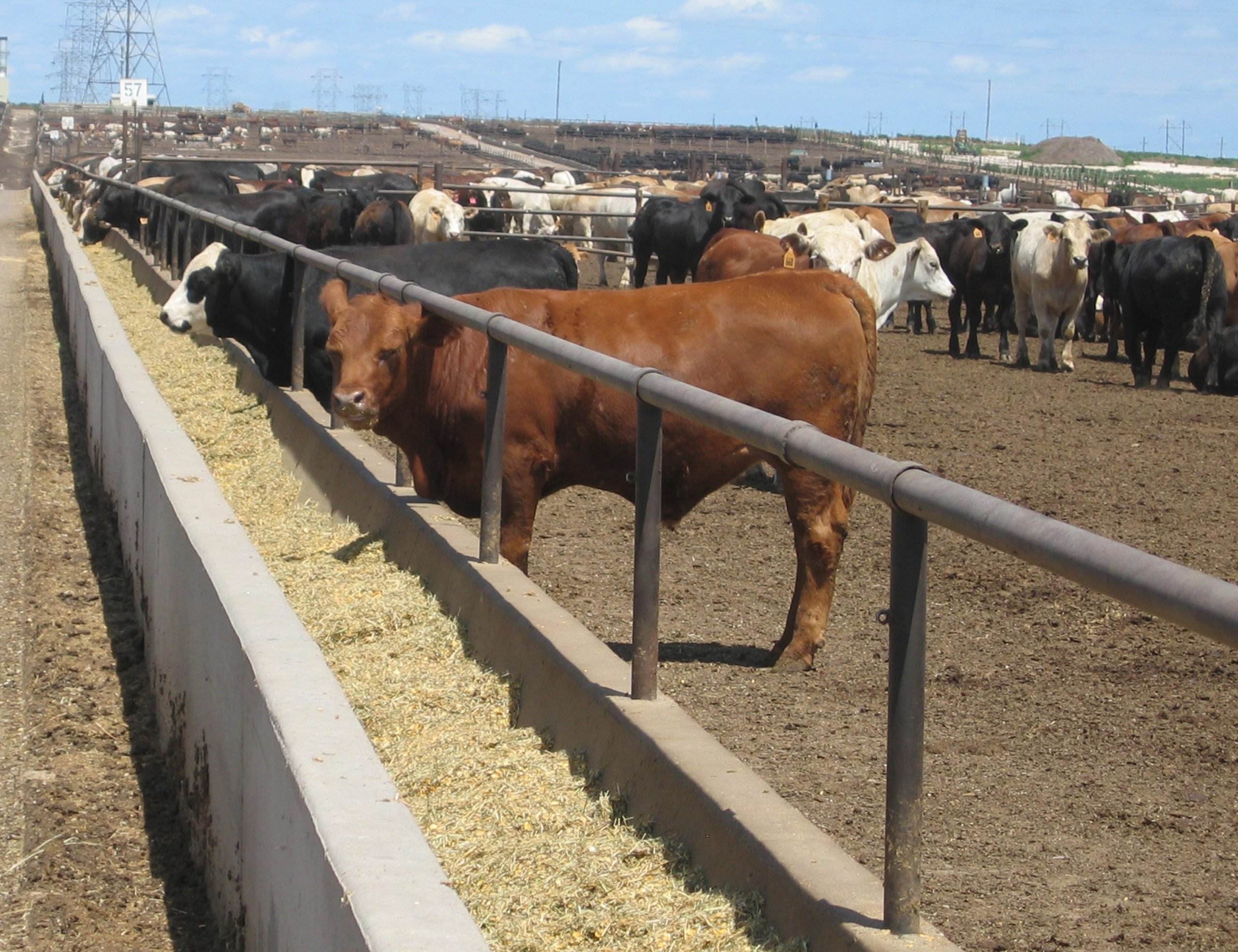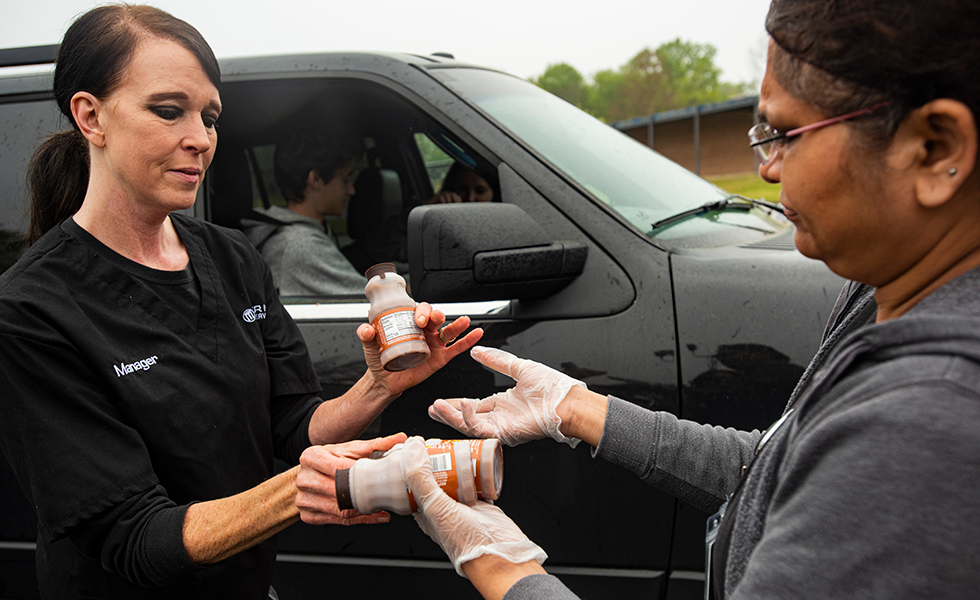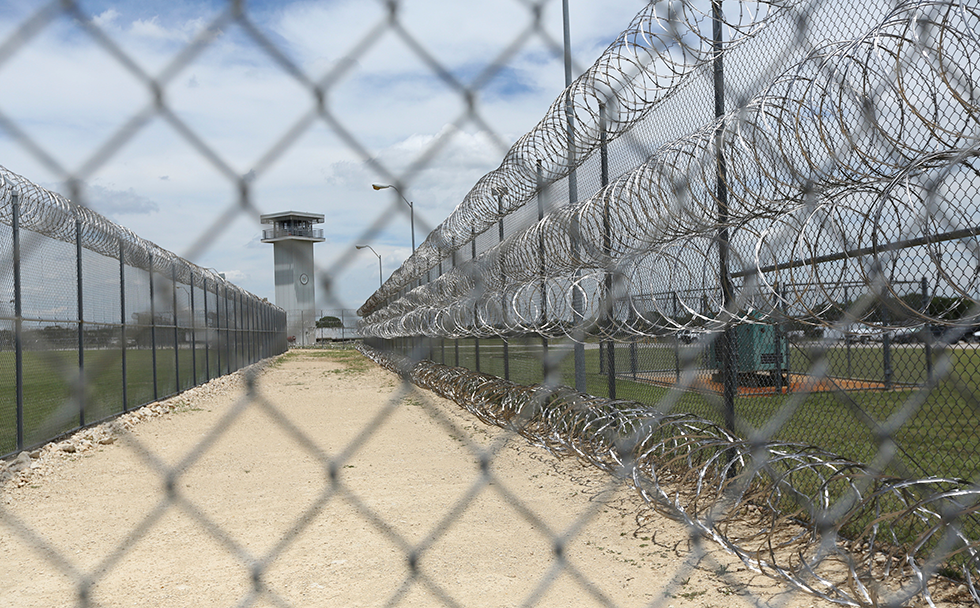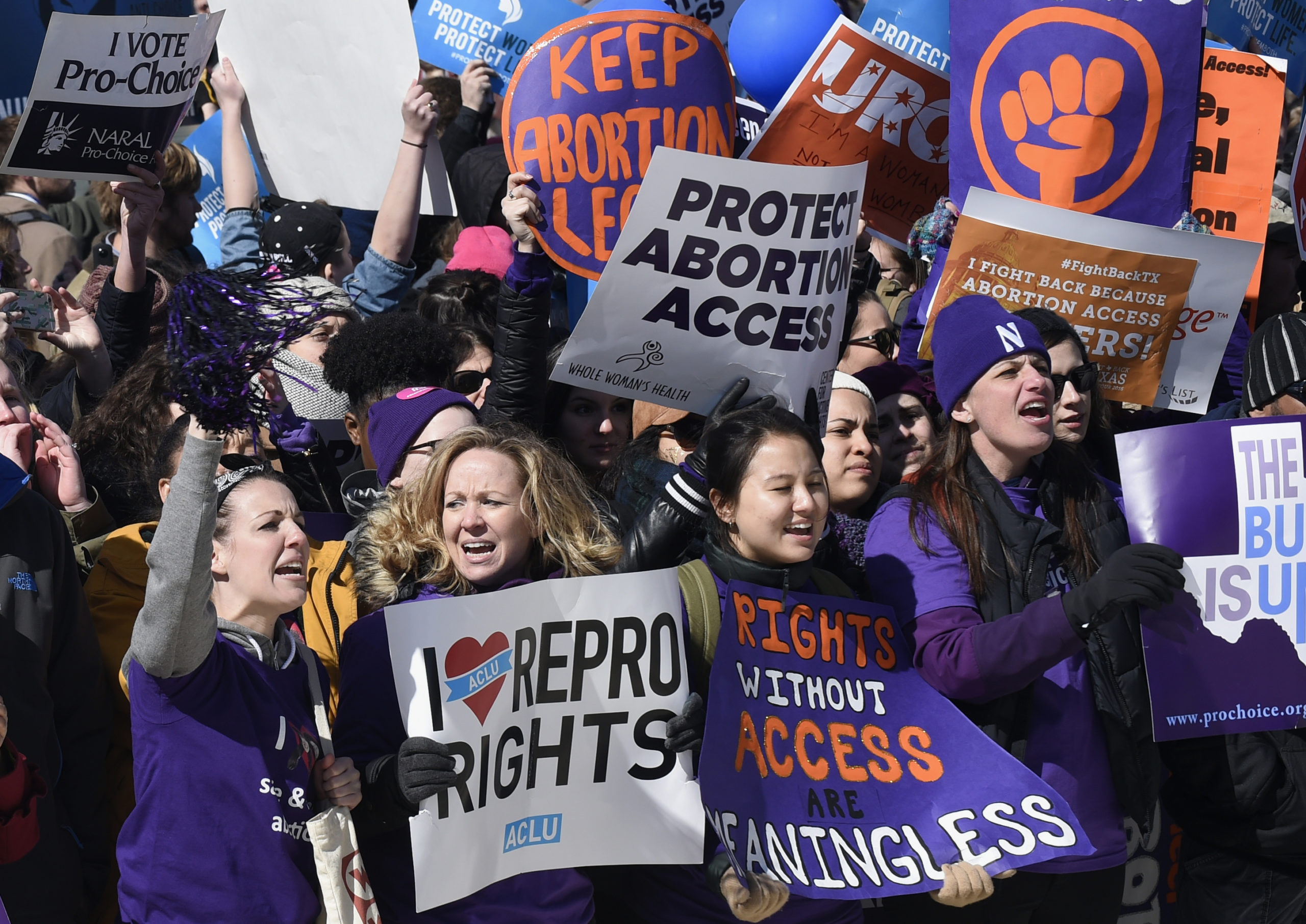
In Southeast Lubbock Neighborhood, Residents are Fed Up With a Feedlot
Kathy Stewart has complained for years about the fecal dust invading Yellowhouse Canyon. But so far, her concerns have mostly been ignored.

Above: Lubbock Feeders is permitted to hold 50,000 head of beef cattle and can produce up to 2.9 million pounds of manure in a single day.
The wind is high in Yellowhouse Canyon, a working class neighborhood on Lubbock’s southeastern outskirts, as Kathy Stewart collects her chihuahua from the front yard of her home. It’s usually windy in Lubbock, but on this September morning the breeze carries the unmistakable stench of feces. “Cow crap,” Stewart says as she retreats inside with her dog. The odor is prevalent most days. To make matters worse, the wind frequently delivers a blast of fecal dust: dried manure that’s been stomped by feedlot cattle and carried to whomever is unfortunate enough to live nearby.
Stewart, who is president of the neighborhood group in this historically black neighborhood, says living with the odor and dust is a constant source of consternation. When it’s at its worst, she and neighbors hack and cough and have trouble breathing.
The culprit, she believes, is Lubbock Feeders, a concentrated animal feeding operation (CAFO) less than a mile south of her home. The facility is permitted to hold 50,000 head of beef cattle and can produce up to 2.9 million pounds of manure in a single day. Stewart has registered two complaints with the Texas Commission on Environmental Quality (TCEQ) about the dust and odor, but no action has been taken.
“Three days ago, it smelled like S-H-I-T. I mean, it smells like cowshit, man,” she said in September. “Sometimes you can’t even go sit on your porch.” Stewart says she’s also called the feedlot to complain, to no avail.
Communities across West Texas and the Panhandle, which accounts for nearly a quarter of the U.S. beef supply, are being choked by fecal dust from area feedlots. From 2008 to 2017, TCEQ fielded at least 100 complaints about fecal dust and odor from the operations, according to data obtained through an open records request.
An Observer investigation, conducted in collaboration with the Food & Environment Reporting Network and the Midwest Center for Investigative Reporting, found that the dust is making people in rural communities sick and damaging the environment. Pollutants associated with feedlots—such as particulate matter, ammonia, and methane—contribute to respiratory problems, smog, and global warming. The National Association of Local Boards of Health wrote in 2010 that “CAFOs are an excellent example of how environmental problems can directly impact human and community well-being.” But TCEQ is doing little to fix the problem. In the last five years, the agency has issued no fines or warnings against large beef feedlots.
The foul air in Yellowhouse Canyon speaks to a larger issue in cities across the nation: municipal zoning plans that tend to locate communities of color in close proximity to industrial polluters.
Stewart’s next door neighbor, 61-year-old Eddie Row, says he is prescribed an inhaler, which he needs more frequently when the dust is high. Row describes the plumes of feedlot dust that descend on the neighborhood as “a haze or a cloud … When it’s all in the air, it’s bound to affect everybody.” Stewart, Row, and other members of the Yellowhouse Canyon neighborhood group meet once a month at First Progressive Baptist Church. The issue of feedlot dust comes up frequently in the meetings. “They say, ‘Well, hell, it smells so bad. I tell them to go down there and complain,” Stewart says.
Texas Housers, an affordable housing advocacy group based in Austin, has taken notice of the problem. Last year, the group installed an air monitor on Row’s house to gauge the level of air pollution. So far, the monitor has generally shown acceptable air quality, but the group is considering adding another one closer to the feedlot to see how pollution varies throughout the neighborhood. “From time to time you can just smell that stuff,” said Adam Pirtle, a community advocate and policy analyst at Texas Housers. “With the wind direction, it can blow in and … you can get watery eyes and it’s really gross.”
The foul air in Yellowhouse Canyon speaks to a larger issue in cities across the nation: municipal zoning plans that tend to locate communities of color in close proximity to industrial polluters. The trend comes into stark focus in Lubbock, where city leaders have systematically crammed minority communities into the east and north parts of town—near the same places zoned for industrial use. Seventeen of the 20 facilities required to obtain federal air pollution permits are located near minority communities. Residents there are subjected to dust, odors, and even weevil infestations from nearby cottonseed oil plants.
The fact that Stewart’s neighborhood has historically been home to African Americans is no accident. In 1923, the city’s mayor mandated that blacks could only live in the southeast part of town. As decades passed, city leaders opted not to locate businesses districts in minority neighborhoods, instead expanding industrial zoning in those areas. In the south and west parts of town, where the town’s white residents overwhelmingly live, there are virtually no industrial polluters.
In 2018, city leaders announced they would update Lubbock’s “comprehensive land use plan” for the first time in three decades—an opportunity not only to acknowledge years of environmental racism, but also to do something about it. Hundreds of public comments flooded in, urging the city to rethink its land use policies. But in the end, leaders left the land use plan mostly untouched. The plan “basically leaves that racist system in place,” Pirtle said.
Texas Housers and Lubbock’s NAACP chapter filed a complaint in December with the U.S. Department of Housing and Urban Development alleging that Lubbock’s zoning policies violate the federal Fair Housing Act.
Inside her Yellowhouse Canyon home, Stewart prepares to drive Row across town for a check-up at a local clinic. “That’s all we do is go to the doctor,” she says. Some of the visits are for respiratory problems. Stewart vows to “raise hell” over the issue of fecal dust by hounding state regulators and pestering local leaders. She hopes advocates’ efforts will help protect vulnerable communities like hers from polluters. Until then, she’s got a doctor’s appointment to get to.
Read more from the Observer:
-
Texas Prisons Ban Greeting Cards, Expand Drug-Sniffing Dog Searches to Visitors: Families of prisoners and civil rights groups call the new policies arbitrary, punitive, and isolating for people behind bars.
-
In the Trump Era, Practicing Immigration Law is Like ‘Swimming in Molasses’: Veteran attorney Elise Harriger is learning how to lose, but she vows to keep on fighting.
-
ACLU Sues East Texas Towns Over ‘Sanctuary City for the Unborn’ Ordinances: The lawsuit was filed on behalf of two abortion access groups that were named “criminal organizations” by the local ordinances.


